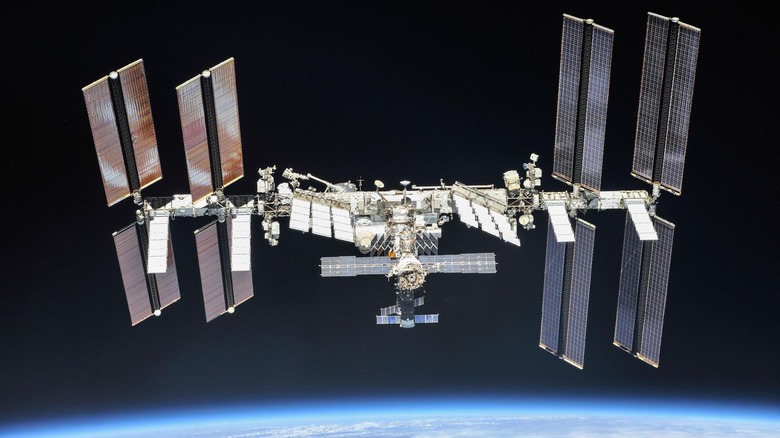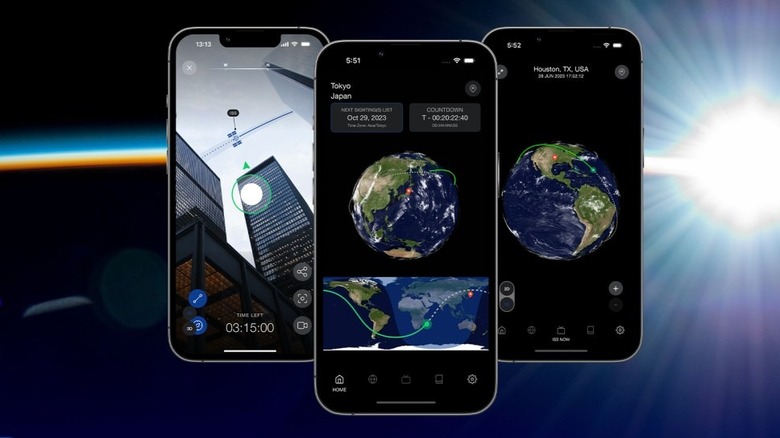How To Spot The International Space Station Using NASA's New App
If you're out on a cloudless evening and you look up at the sky at just the right time, you might be lucky enough to spot the International Space Station passing overhead. You can see it even with the naked eye as a streak of light moving across the sky. However, due to the speed of its movement and the fact it is only viewable at certain times, it's not easy to predict when it will be visible. To help with this, NASA has released a new app (not to mention the new streaming service) that will help amateur astronomers and curious skywatchers locate the space station and spot it when it passes over them.
The Spot the Station app is available for both iOS and Android; it lets you set your location and see when the station will be visible. It shows when the next sighting of the station from your location will be, along with a countdown, and a map and a globe showing the station's position over the Earth.
In addition to the station-tracking features, the app also offers information and news about what's going on at the International Space Station, such as upcoming spacewalks, the research being done on board, and upcoming arrivals and departures of the spacecraft that bring crew members or cargo to and from the station from Earth. The app was released just ahead of the 25th anniversary of station operation, marked on December 6, 1998, when the two modules Zarya and Unity were joined.
How to spot the International Space Station
The space station passes so quickly through the sky because it orbits the Earth at 17,500 miles per hour. It is visible as a dot because it reflects sunlight, but during the day the sky is too bright for it to be seen. So you will only be able to spot it at dawn or dusk when there is enough sunlight for it to reflect but not so much that the sky drowns it out. How often you'll be able to catch it from Earth depends on when it is dark where you are and when the station happens to pass over you, which NASA says can vary from several times a week to just once a month.
The app helps to spot the station using an augmented reality interface with a compass to help you point in the right direction to see the station, and also offers notifications for when viewing opportunities will be possible based on your location. If you snap a photo or video of the station using your phone, there's also a way to share your images using the app.
"Even after 23 years of continuous human presence aboard the International Space Station, it's incredibly exciting to see the station when you look up at just the right moment," said Robyn Gatens, NASA's International Space Station director. "The orbiting laboratory that continues to provide so many unique, tangible benefits for humanity really isn't that far out of reach."

